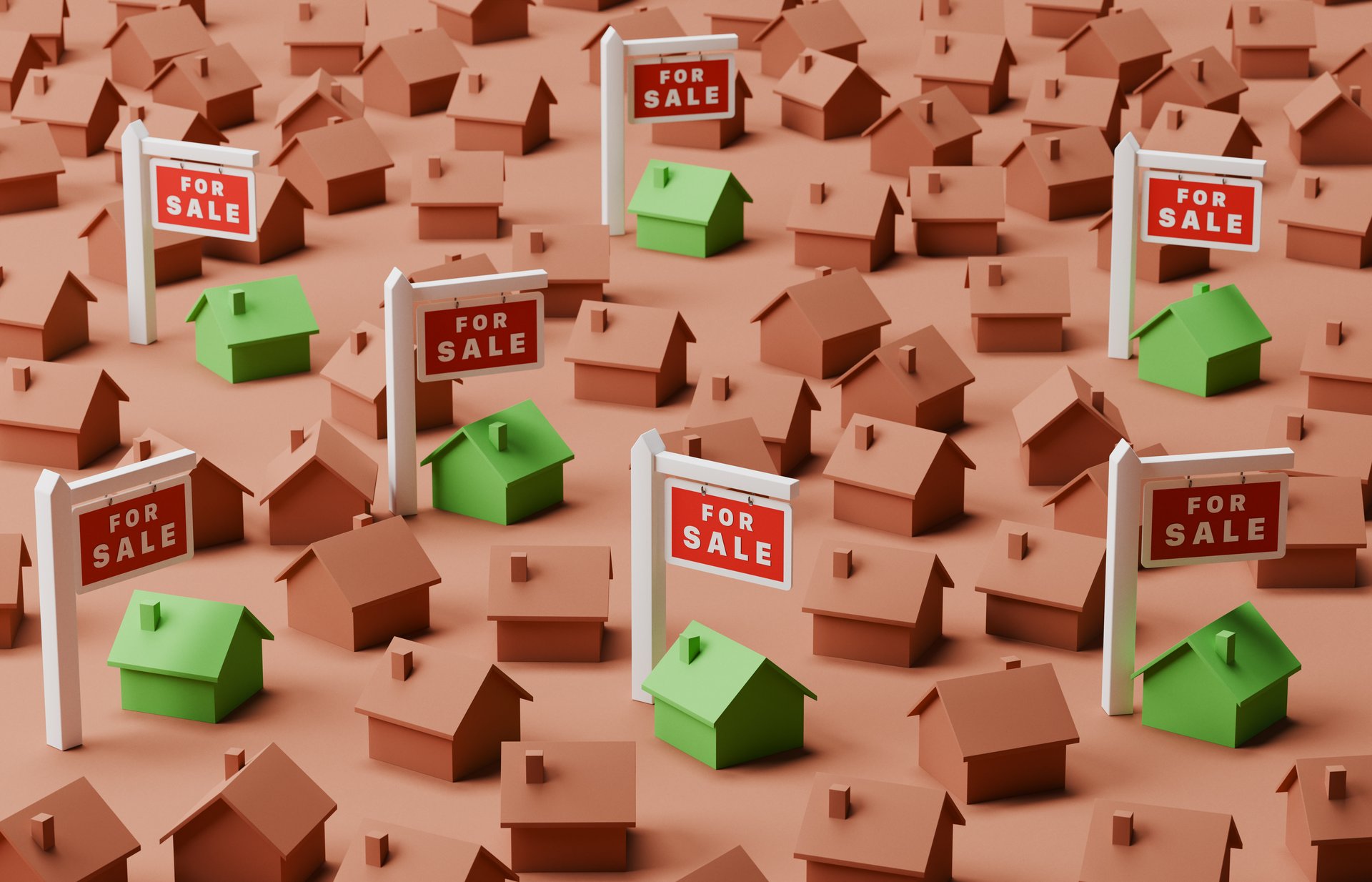U.S. home prices are lagging. Blame this one key factor
New housing data reveals a nationwide slowdown, while pandemic-era regional trends reverse

Getty Images / J Studios
The U.S. housing market is showing signs of a slowdown, as increased inventory and flagging buyer demand begin to temper home prices nationwide.
Suggested Reading
Prices rose just 2.7% year-over-year in April, according to the latest S&P CoreLogic Case-Shiller Home Price Index released Tuesday. That’s down from the 3.4% annual gain recorded in March and marks the smallest price growth since mid-2022. It's also worth nothing that much of the price appreciation occurred over just the past half-year, buoyed by the typical springtime surge in real-estate activity.
Related Content
The downturn was evident across both the 10-city and 20-city composites tracked by S&P, with prices in many metro areas now well below their recent highs.
New York led the nation with a 7.9% annual increase in home prices, followed by Chicago at 6% and Detroit at 5.5%.
These gains contrast with the early pandemic years, when demand for warm, southern cities was surging, leading to the strongest appreciation.
Now, some of those previously booming markets are witnessing a pullback. Homes in Tampa dropped 2.2% in value from a year ago, while Dallas saw a slight 0.2% decline. San Francisco prices remained largely unchanged, and both Phoenix and Miami posted modest gains of just above 1%.
“This market cycle has upended regional dynamics,” said Nicholas Godec, head of fixed income at S&P Dow Jones Indices, in a statement. “Popular destinations during the pandemic are now lagging behind, while traditional strongholds in the Midwest and Northeast are leading the charge. This shift points to a market increasingly guided by underlying economic fundamentals rather than speculative buying.”
Moreover, the S&P’s index slightly lags behind real-time indicators, however, as it reflects a three-month moving average ending in April. Alternative data suggests prices could have cooled even more: real estate analytics firm Parcl Labs, for instance, indicates that prices are now flat compared with last year.
The key reason for the slowdown: Borrowing costs remain stubbornly high. The average 30-year fixed-rate mortgage rate exceeded 7% last month, and currently hovers around 6.6%.
Rates have approximately doubled since 2016, which adds thousands of dollars to annual mortgage payments, weighing on demand.
Borrowing costs appear to affect first-time buyers most. This demographic made up just 30% of home purchases in May—well below the historical average of 40%, according to the National Association of Realtors.
Still, a Redfin report published last month found that the U.S. housing market has undergone an unprecedented shift: Sellers now outnumber buyers by approximately 490,000.
The report said that sellers now exceed buyers by 3-to-1, a stark contrast to the seller-favored conditions of recent years. It forecast that if current trends persist, home prices could decline by 1% by the end of 2025, on average.
Despite the price-growth slowdown, analysts see little risk of a dramatic downturn similar to the housing collapse of the late 2000s, as the number of homes on the market remains lower than pre-pandemic norms.
“There’s still a deep shortage of housing,” Godec noted. “Many current homeowners are holding onto ultra-low mortgage rates from the pandemic, and new construction is falling short of what's needed. This mismatch between supply and demand is preventing a steep drop in prices.”